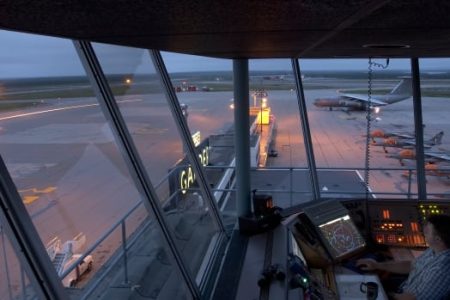
From his office overlooking the runway at Gander International Airport, Reg Wright can see all flights in and out of his corner of Newfoundland.
But in recent years, those plane spottings have been fewer and farther between.
“In Newfoundland, we have a saying called the fisherman’s widow, which is typically anyone that keeps eyes to the sea to see that their husband will return. During the pandemic, I did spend a lot of time in the posture of looking out the window, counting numbers and wondering when recovery was coming,” said Wright, who is CEO of Gander International Airport Authority.
He’s still counting.
The airport has lost four routes since 2019, including a WestJet route to Halifax.
“A third of our passengers have vanished into thin air. By no means are we recovered,” he said.
Gander serves as a microcosm for numerous towns and cities across the country. While Canada’s total domestic passenger numbers now hover at around pre-COVID levels, air travel to smaller communities and even medium-sized cities has withered, pushing up fares and leaving parts of the country less connected.
The 30 biggest airports in Canada have seen passenger capacity return to 98 per cent of 2019 levels on average, according to the Canadian Airports Council. The next 30 are at barely 70 per cent.
Driving the travel rebound is a surge along big-city routes. Flight volumes rose 19 per cent for Vancouver-Montreal, 12 per cent for Toronto-Vancouver, 10 per cent for Calgary-Vancouver and a whopping 51 per cent for Ottawa-Calgary over the past five years, according to figures provided to The Canadian Press by aviation data firm Cirium.
Correspondingly, airfares fell between two and 11 per cent on those routes despite rampant inflation and widespread fare increases.

However, regional air travel still sits far below 2019 levels.
A random sampling tells the tale. The number of direct flights plunged 49 per cent for Sault Ste. Marie-Toronto, 41 per cent for Regina-Calgary and 100 per cent for Quebec City-Rouyn-Noranda between May 2019 and May 2024. Driving between those cities would take at least five to seven hours, with zero stops.
Meanwhile, fares on flights linking those city pairs rose 54 per cent, 16 per cent and 173 per cent, respectively, according to Cirium.
Airports in far-flung communities serve as key hubs for critical services.
“If you’re in the Yukon and you need to travel to Vancouver for your medical appointments, these are the essential roles … whether it’s fighting fires, moving health-care workers, even getting food on our grocery store shelves,” said airports council president…
Read More: ‘On the brink’: Airlines flee small cities, cutting key links to rest of

